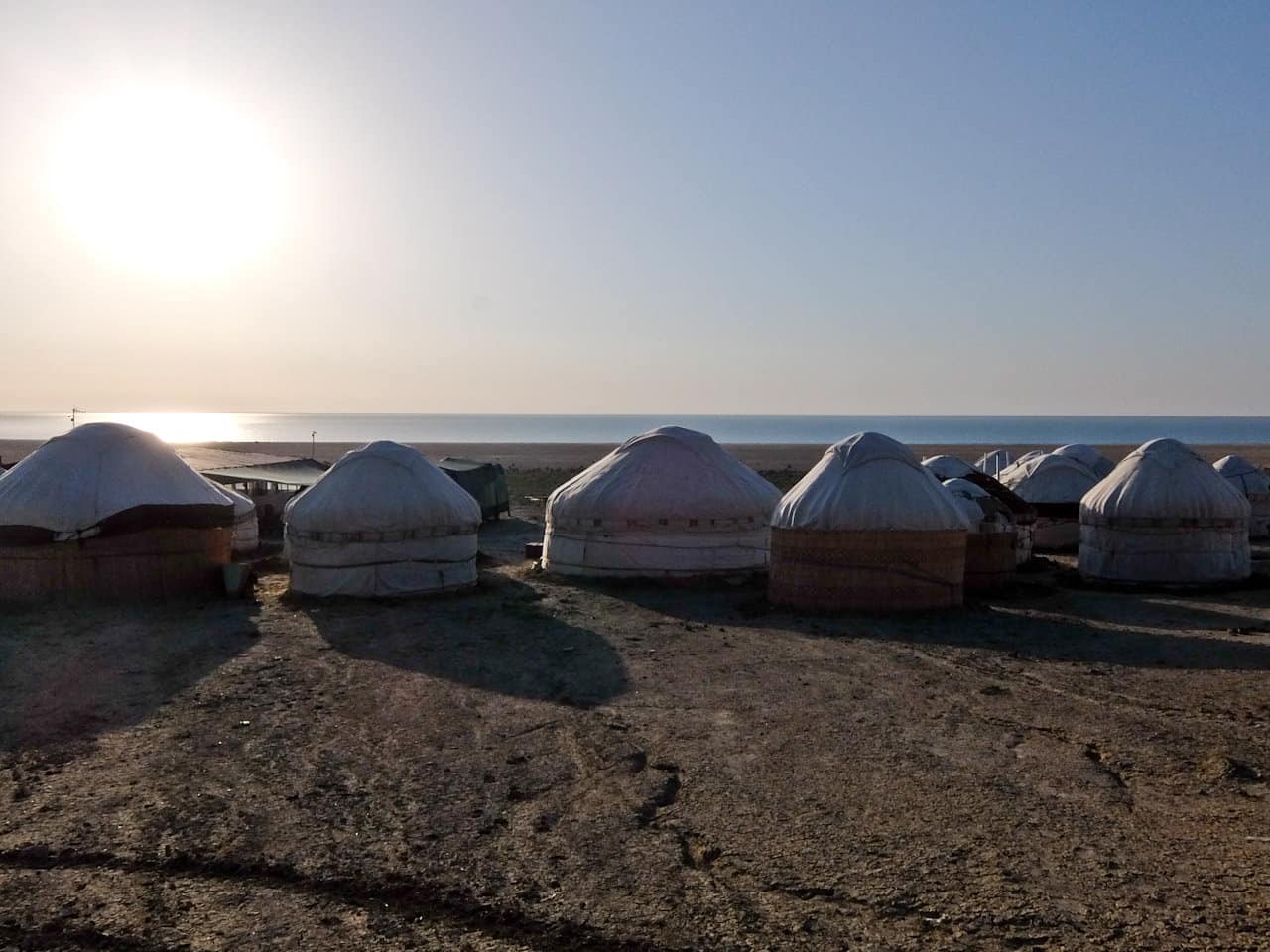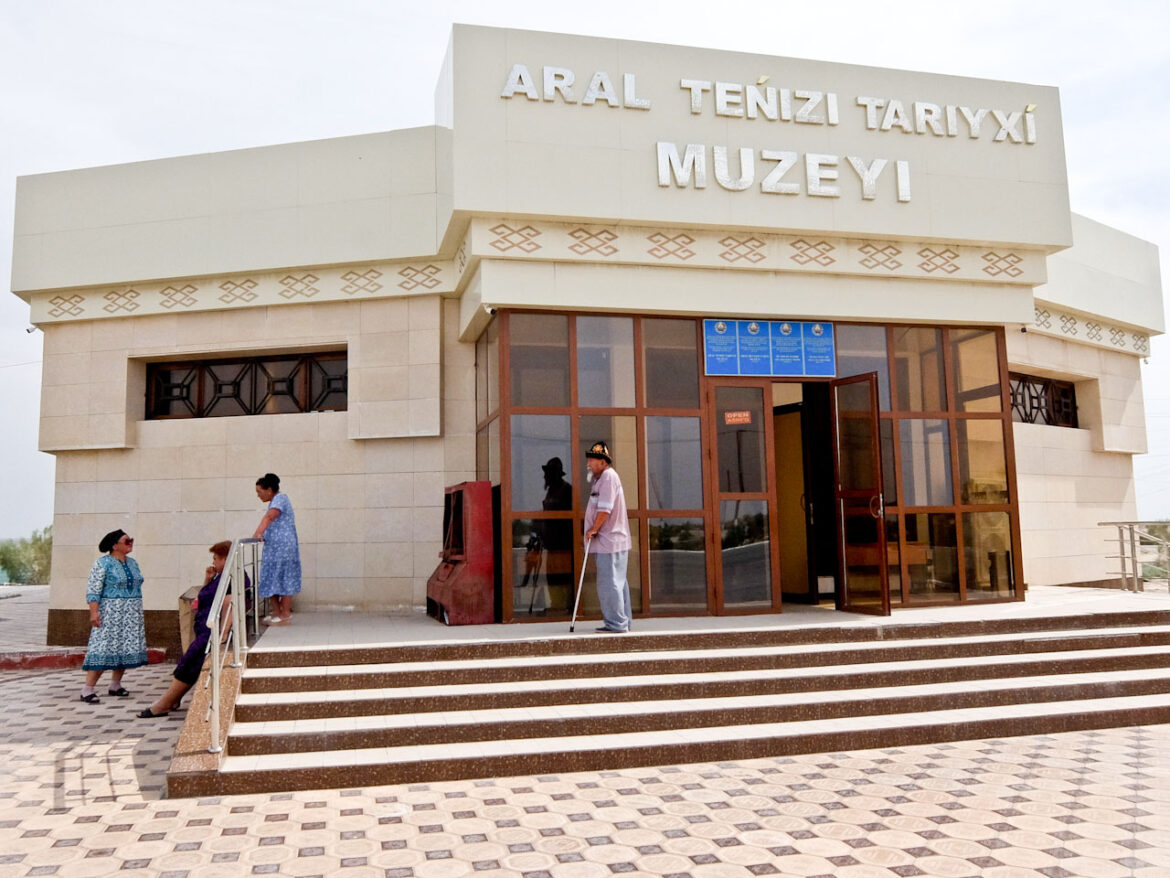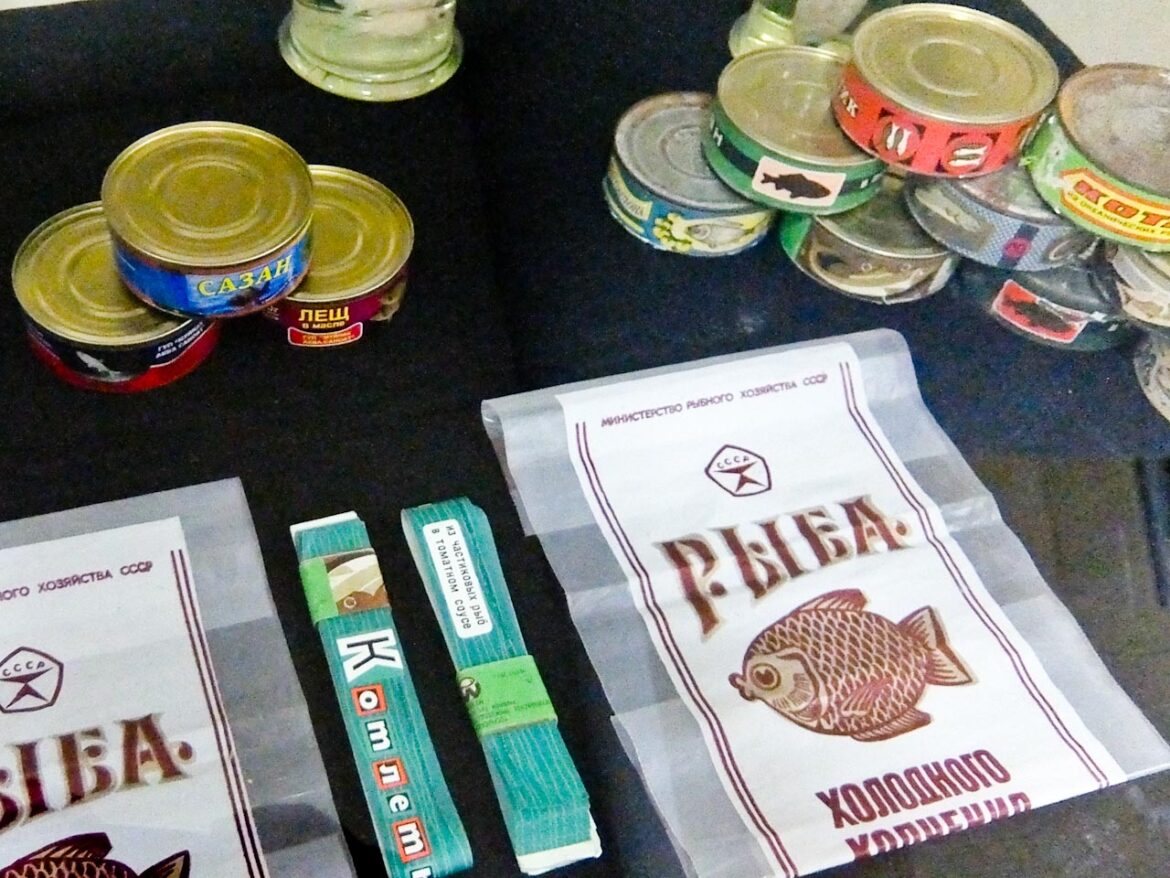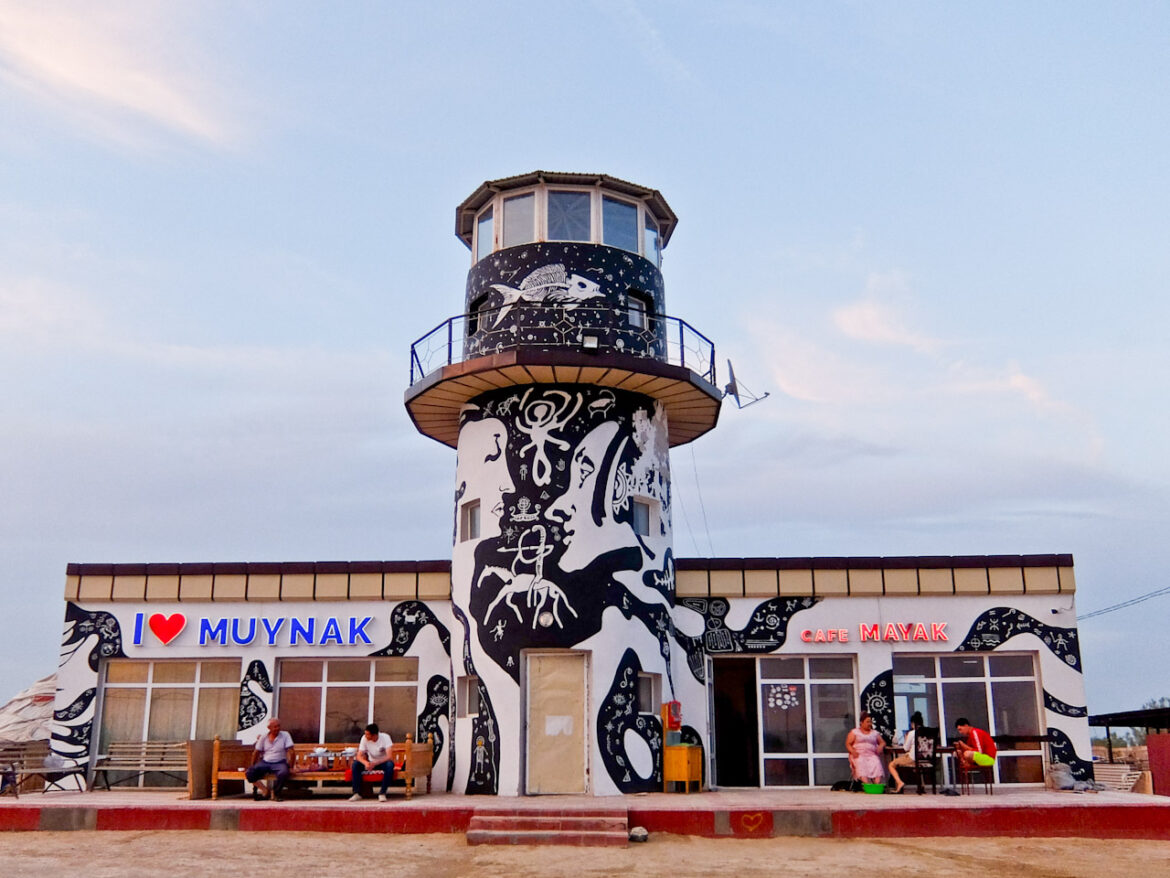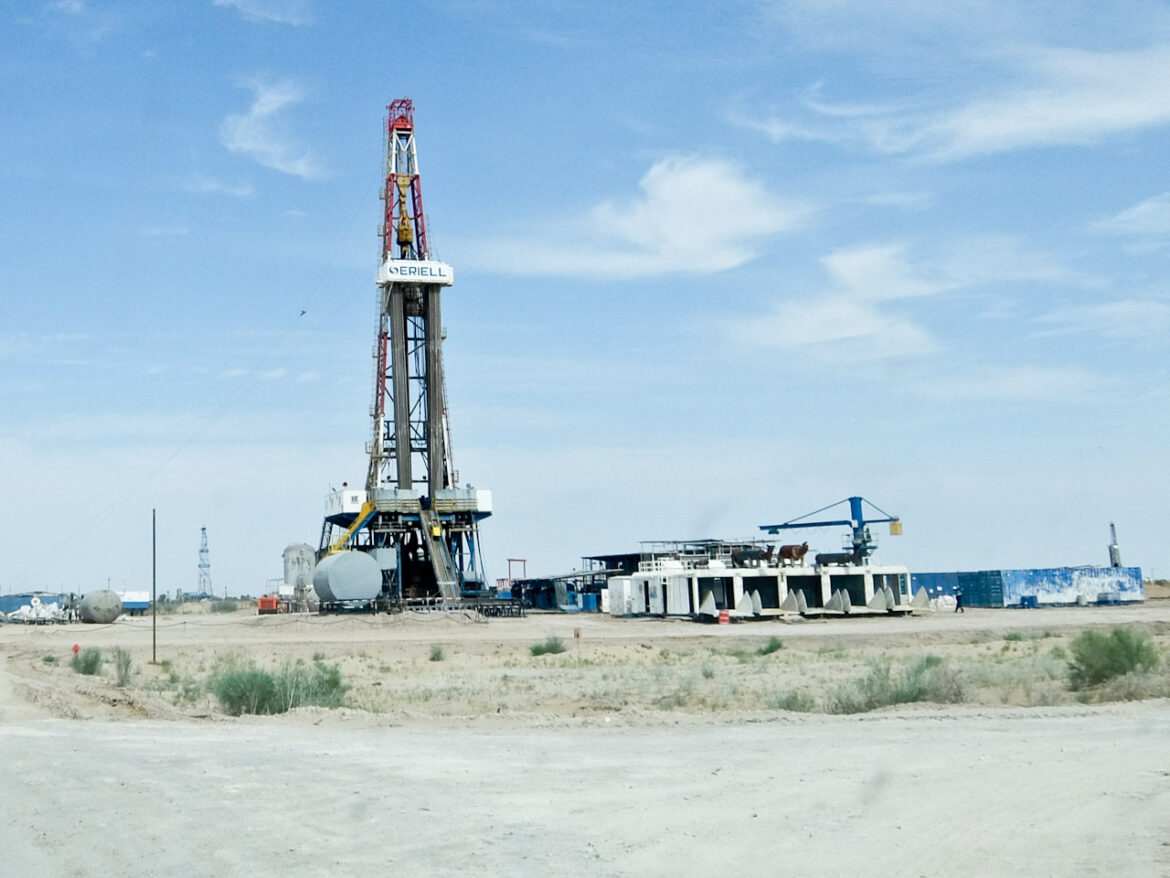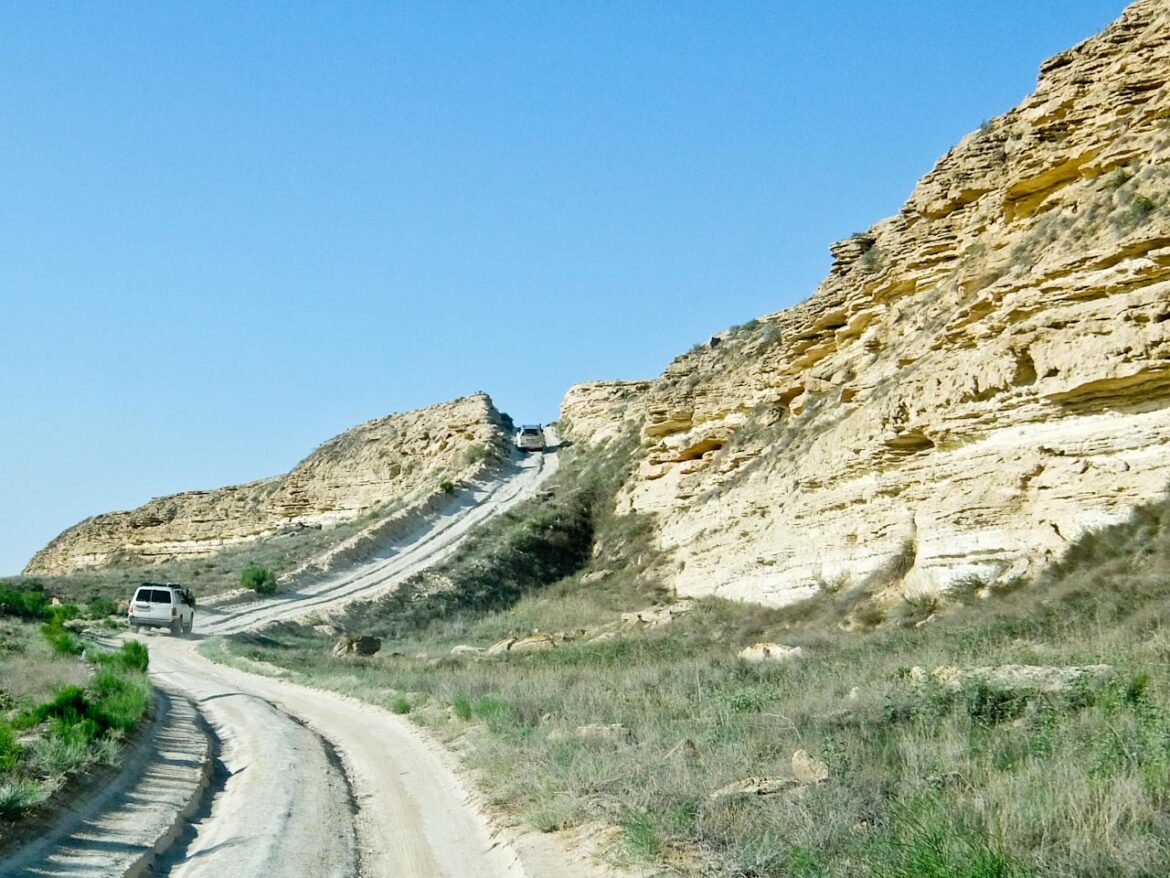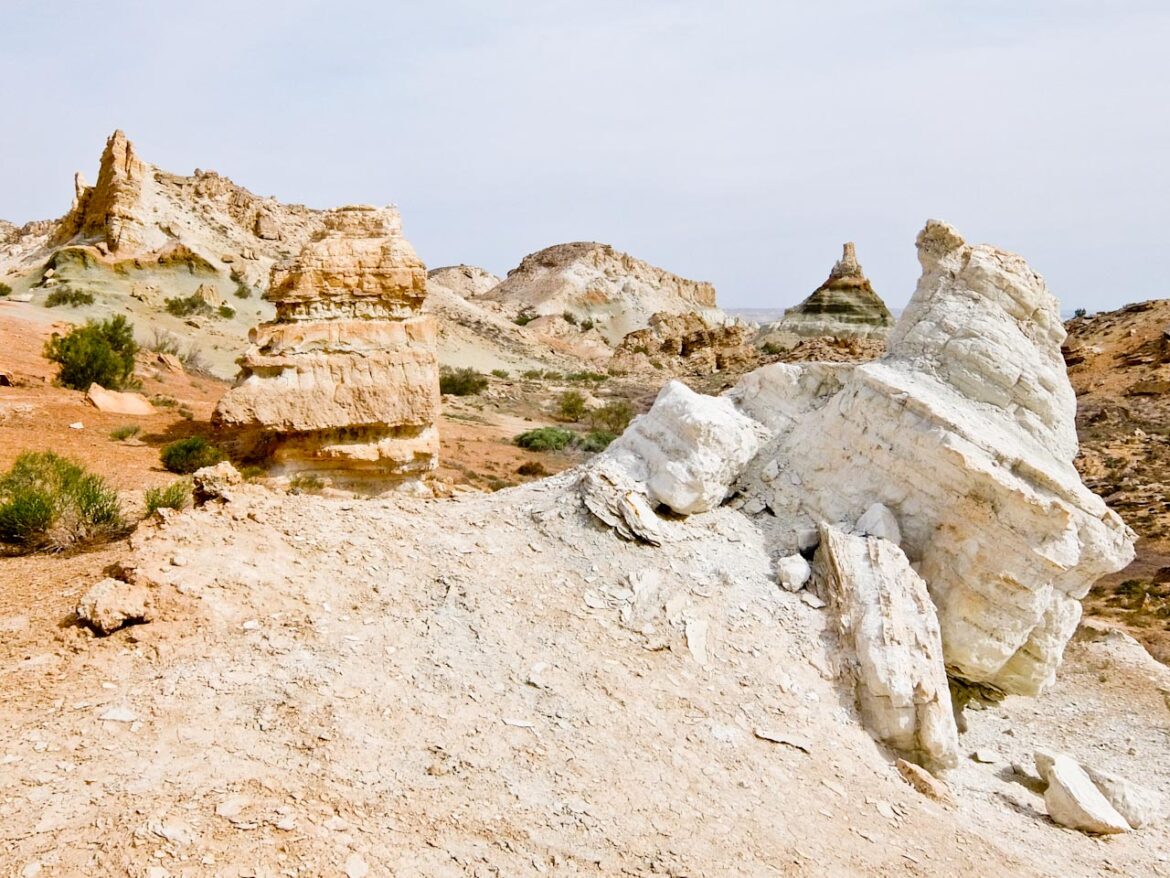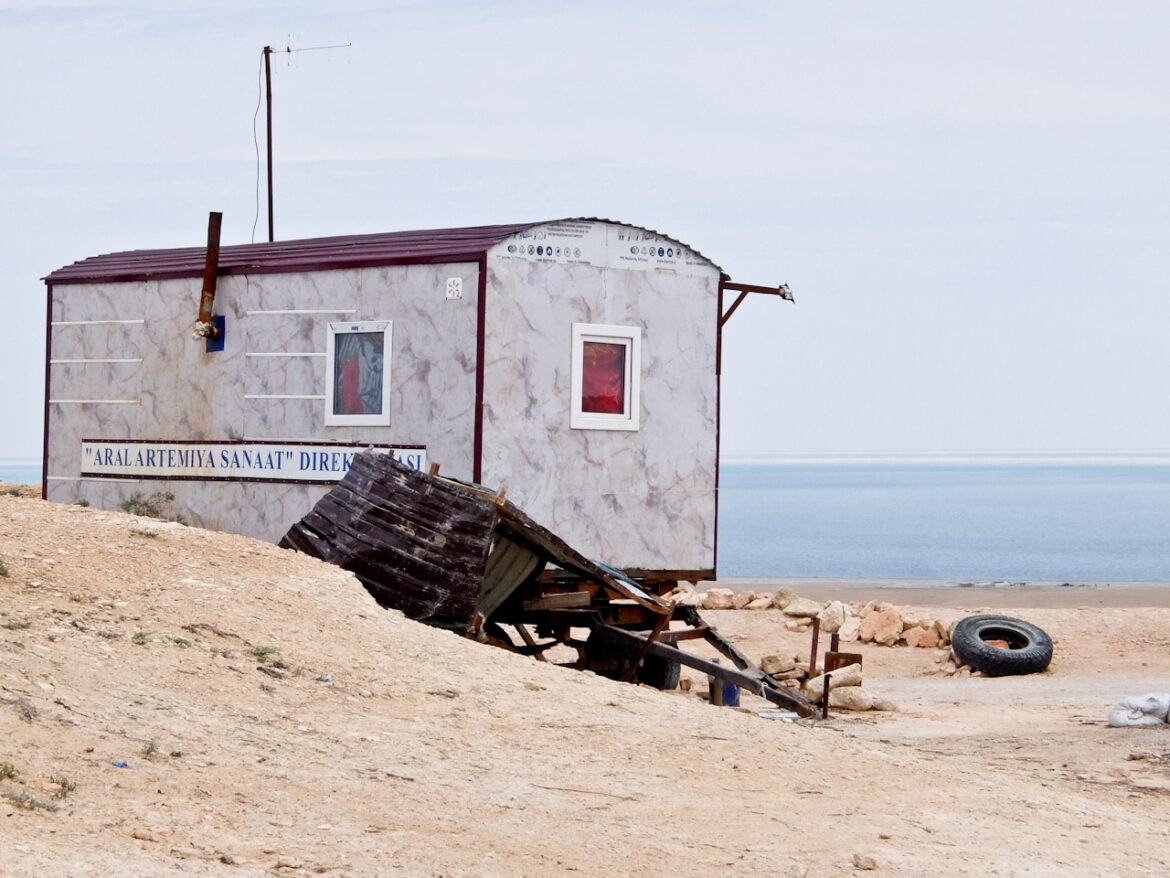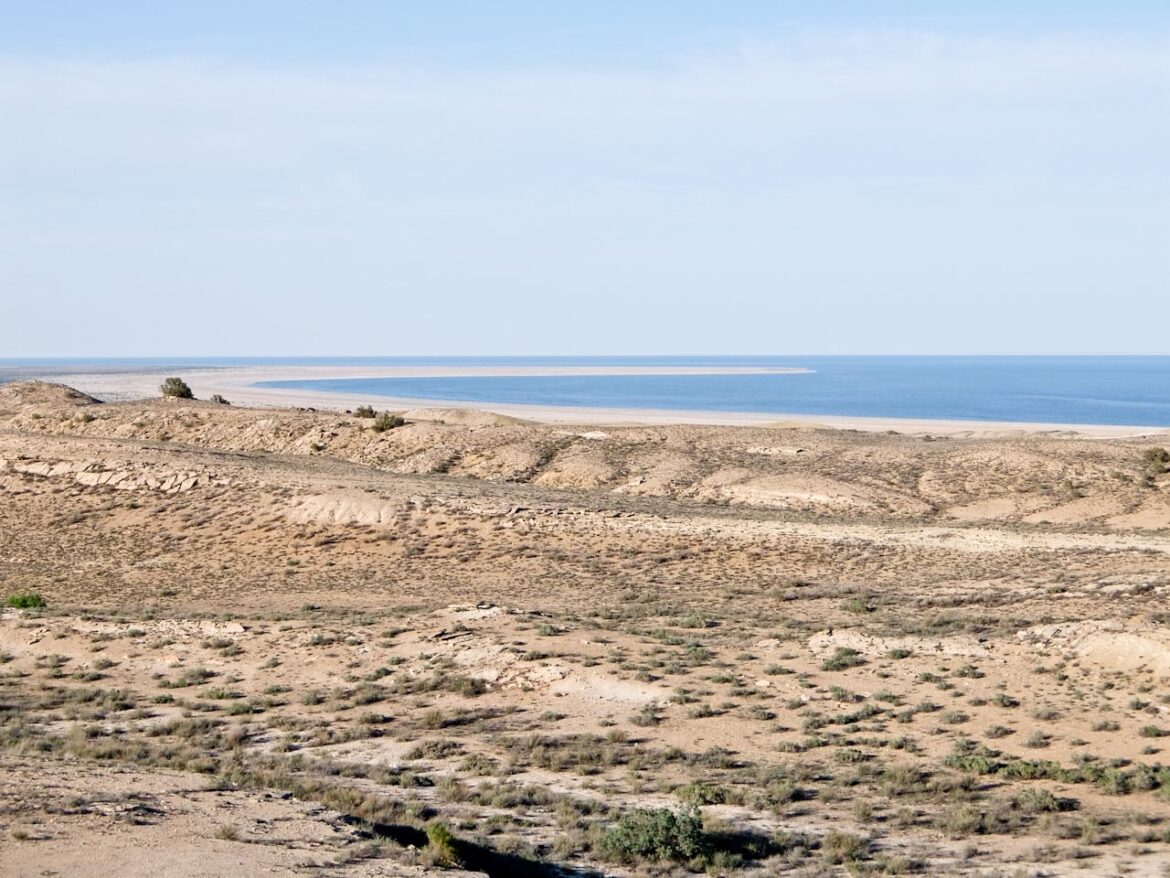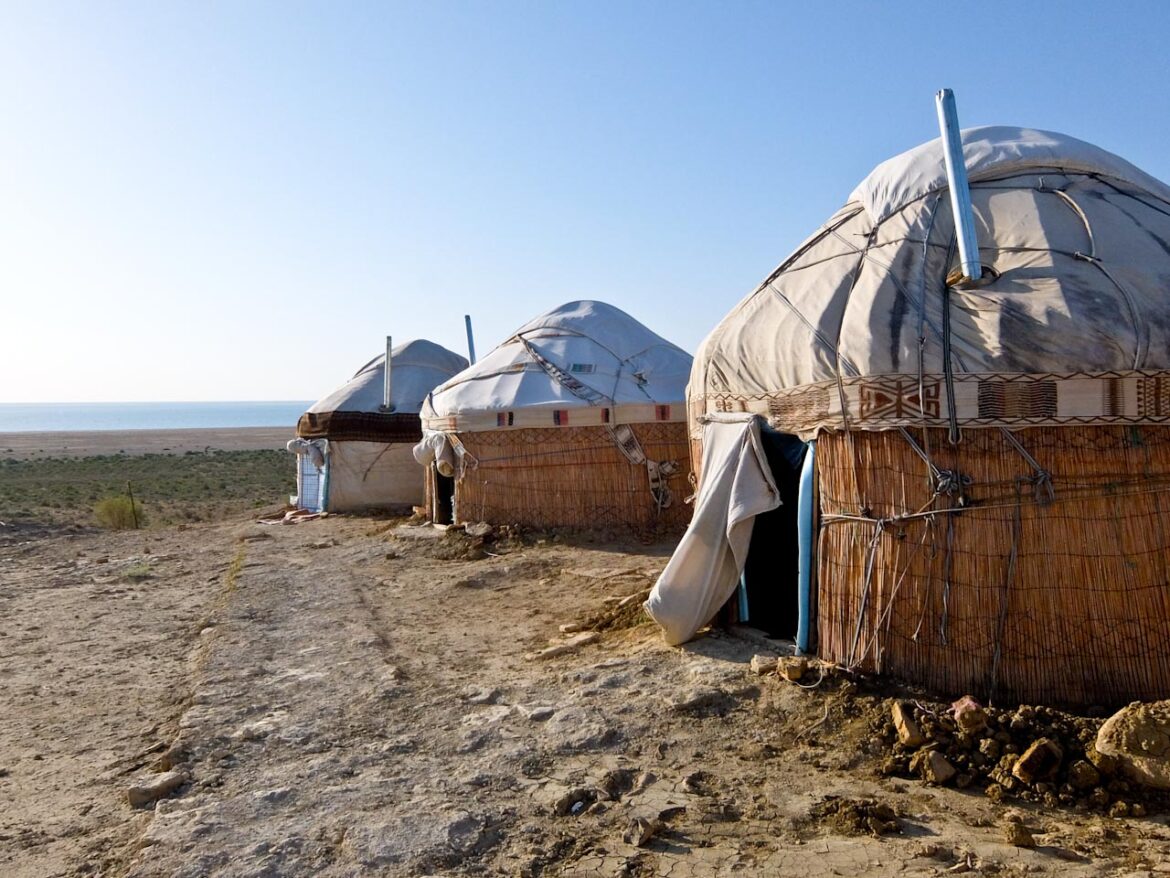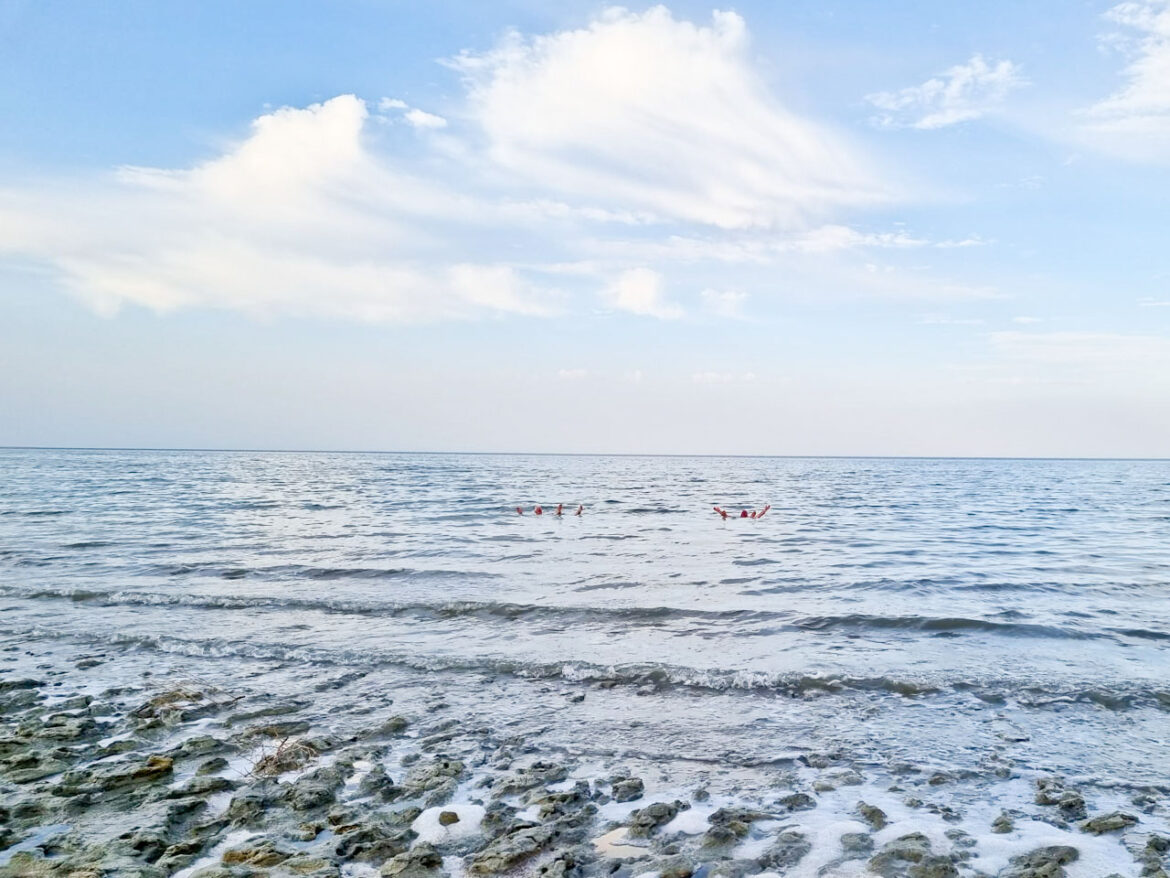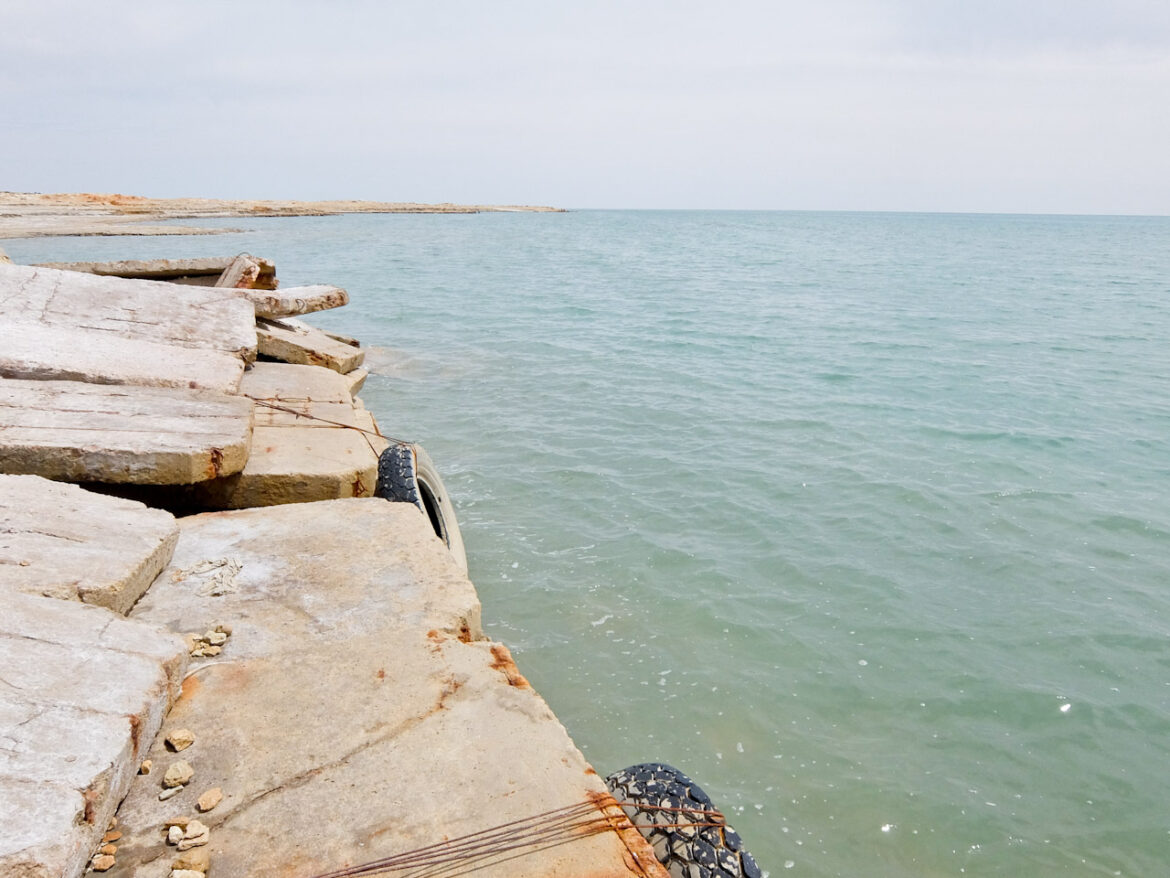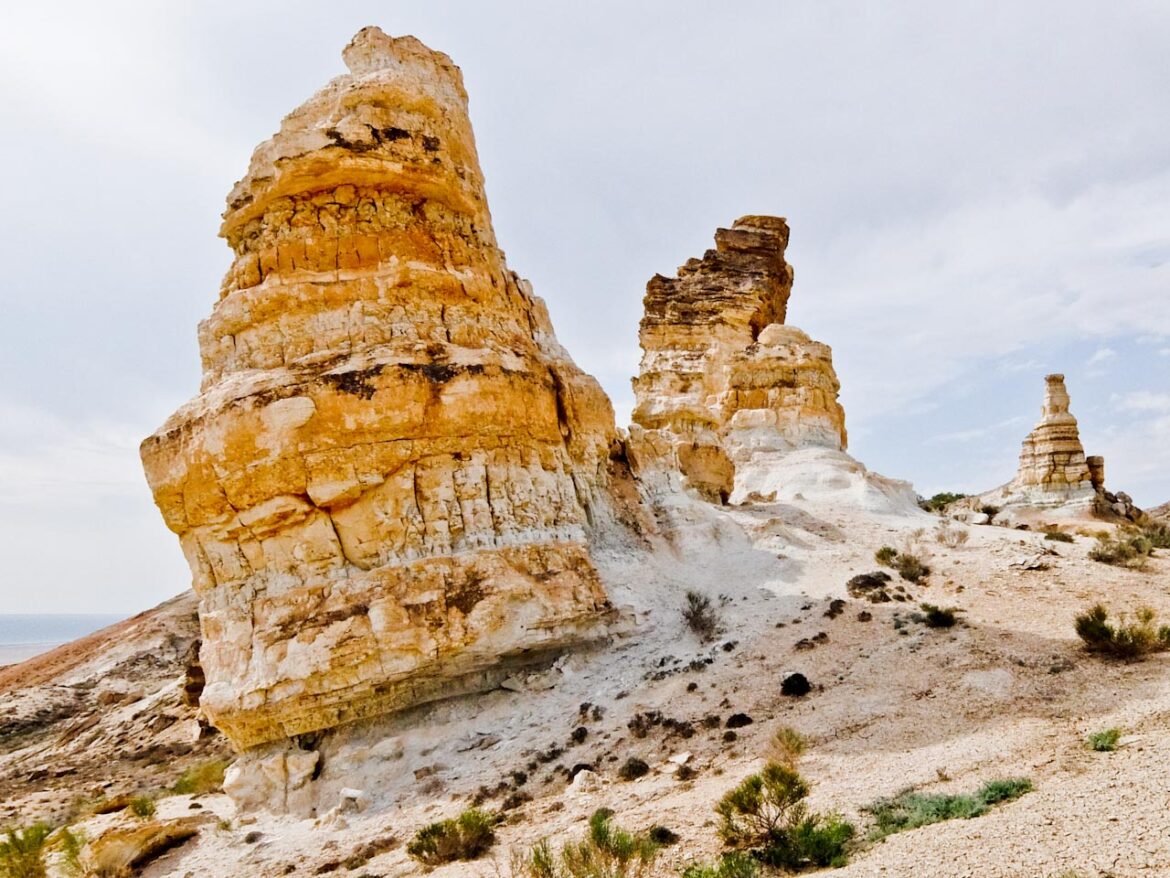Once the world’s fourth largest freshwater lake, the Aral Sea is shrinking fast, so get there quick.
1
The Aral Sea was once a vast and shimmering expanse of water, known as the “Blue Jewel,” of Central Asia. Today most of it is a vast salty desert where water once dominated the horizon. Yet there’s still some water left, the sea a fraction of its former size, and dwindling every day. It’s a harrowing tale of human folly and ecological disaster.
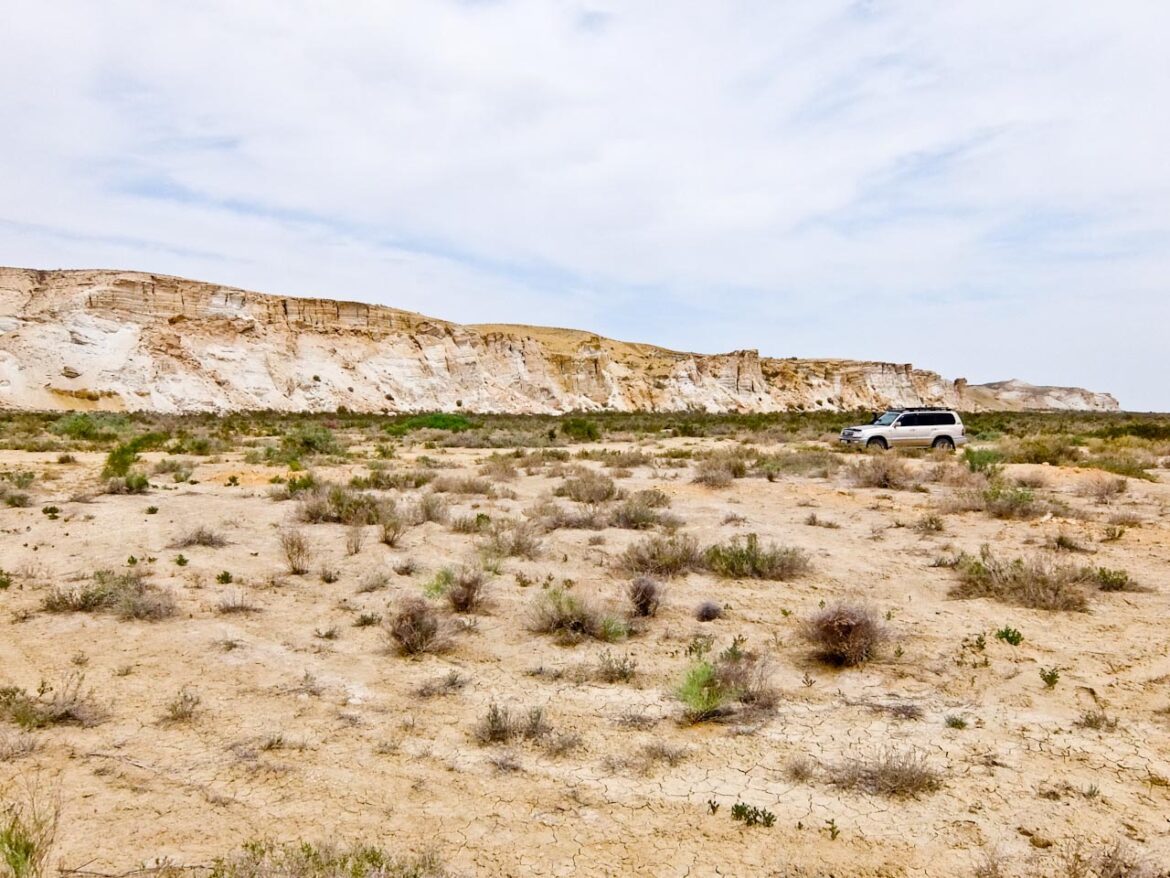
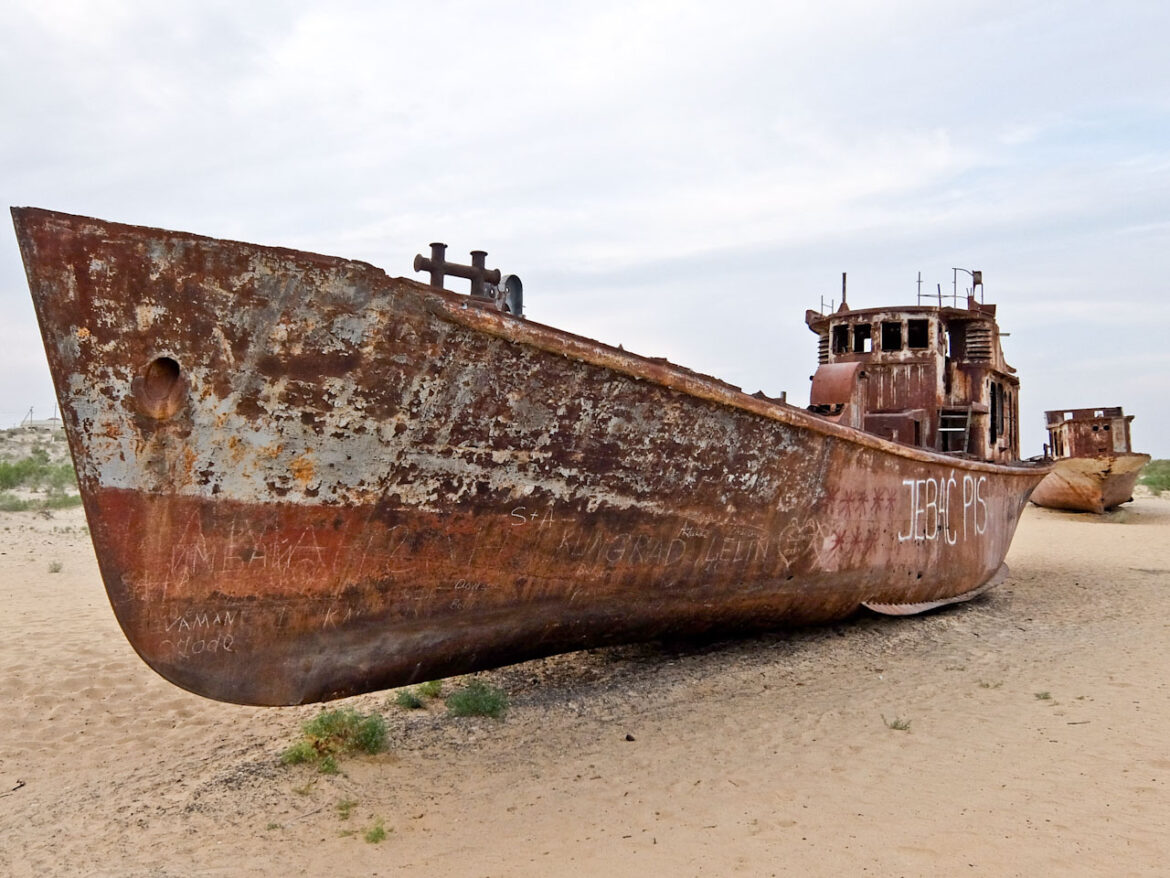
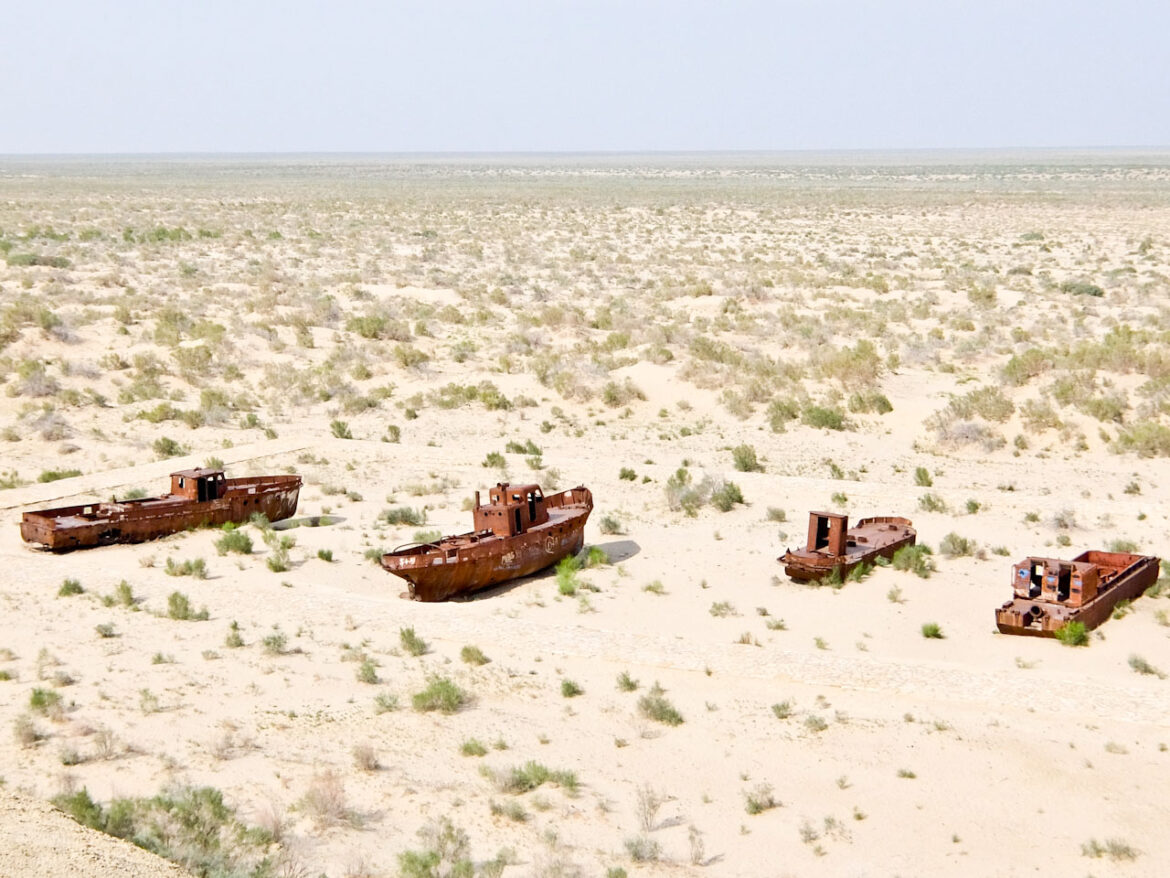
I’m in Karakalpakstan, an autonomous republic in the west of Uzbekistan, a strategic location along the fabled Silk Road. Cities such as Nukus, the present-day capital of the republic, flourished as important trading hubs. The Russian Empire’s expansion into Central Asia led to occupation in 1873 and later it became an autonomous republic within the Soviet Union. Industrialization and agricultural collectivization followed which sowed the seeds of the disaster.
The Aral Sea’s downfall began in the 1960s when ambitious Soviet irrigation projects diverted the water from the Anu Darya and Syr Dayra rivers feeding the sea to irrigate vast cotton fields in the region. As a consequence, the water levels began to drop at an alarming rate, and the once-mighty sea began to shrink.
Fishing communities were left stranded, and the once-thriving ecosystem collapsed, with many native species facing extinction. The exposed seabed, once covered in water, became a toxic desert, laden with salt and agricultural chemicals. Today the Aral Sea is less than a tenth of its former size and scientists predict it will be gone in twenty years.
Muynak
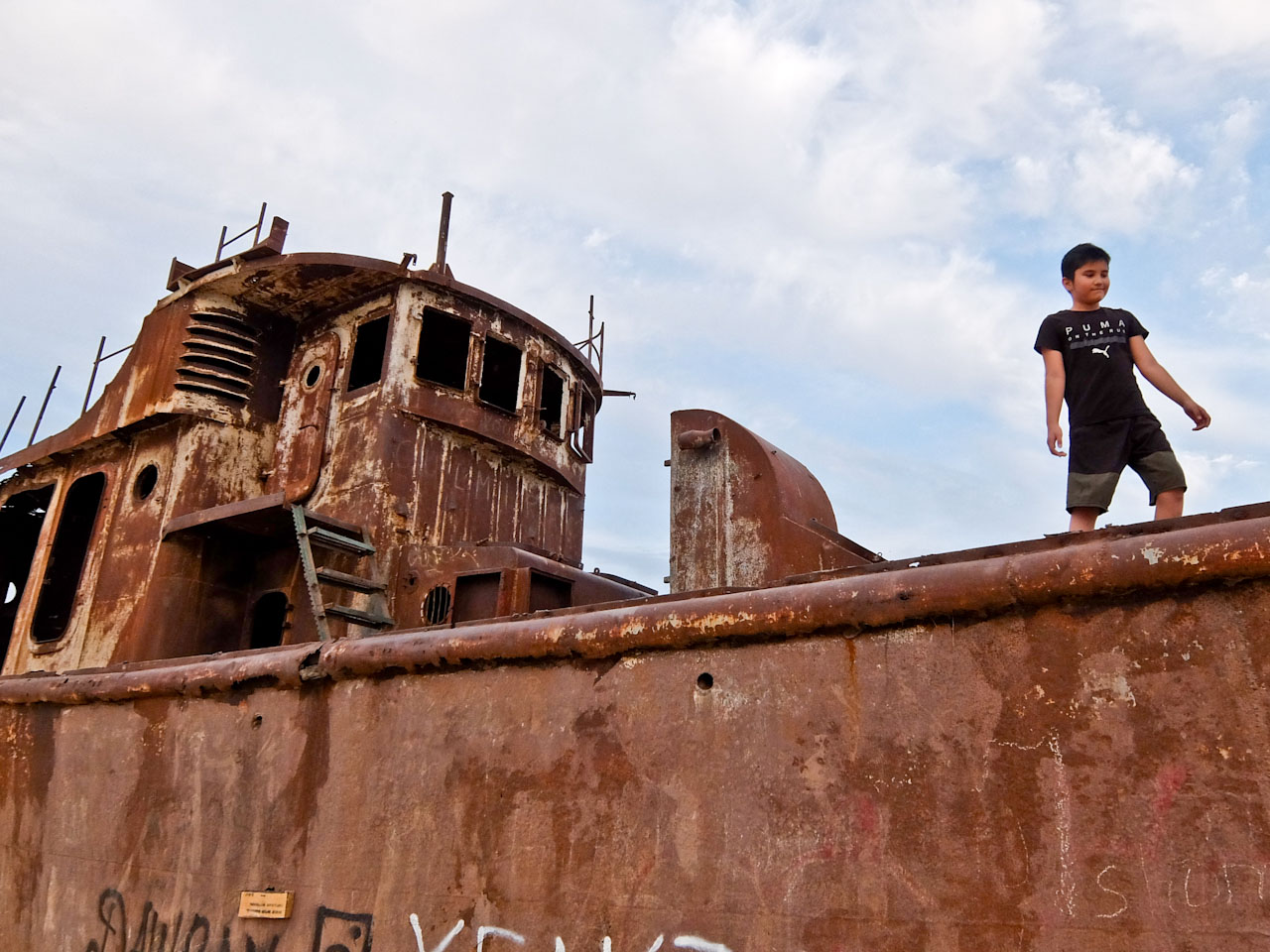
I start in the capital Nukus and it’s a day’s journey across the Ustyurt Plateau on bad roads to Munyak. At its height, the city was home to over 40,000 people, including some 10,000 fishermen, and canneries that annually processed up to 20 tons of fish. The sea’s rapid disappearance devastated the local fishing industry, plunging the community into poverty and hopelessness. Now the population is around 13,500 and the sea shore is now 150km away.
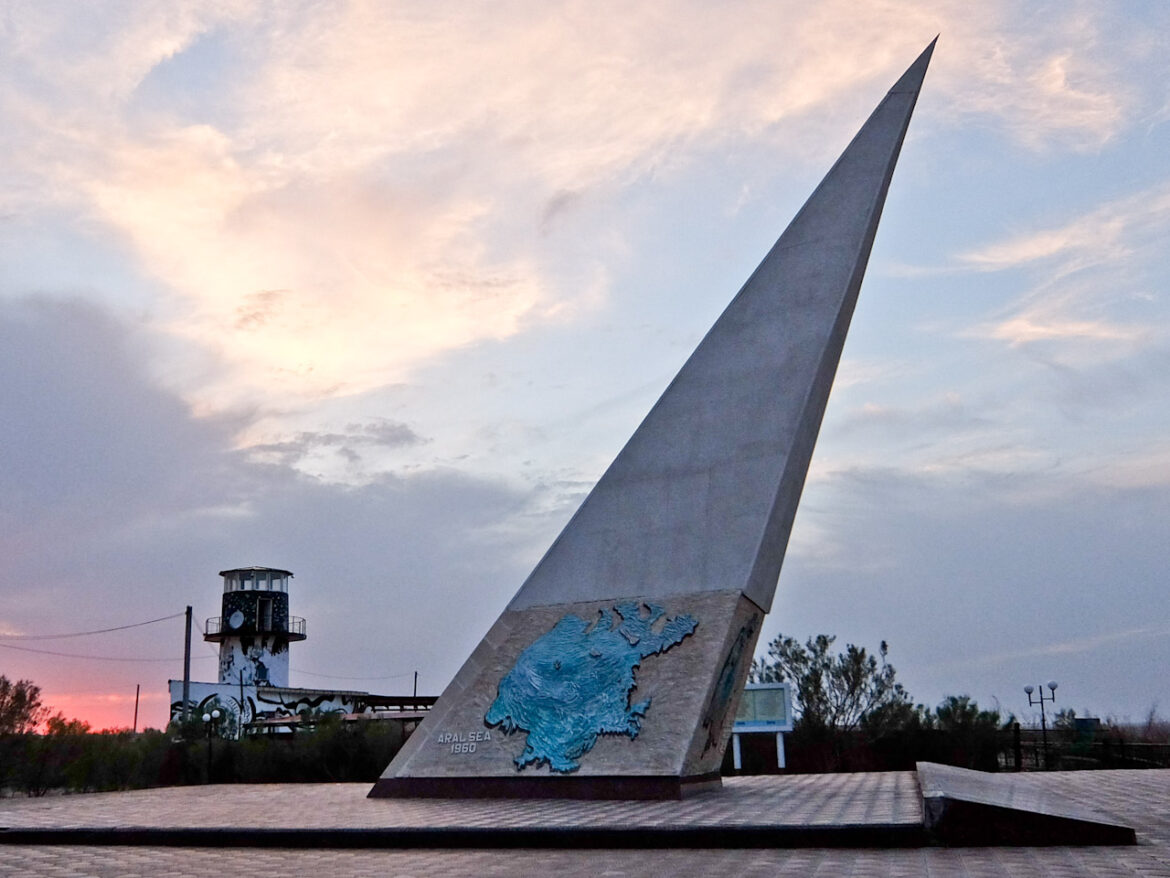
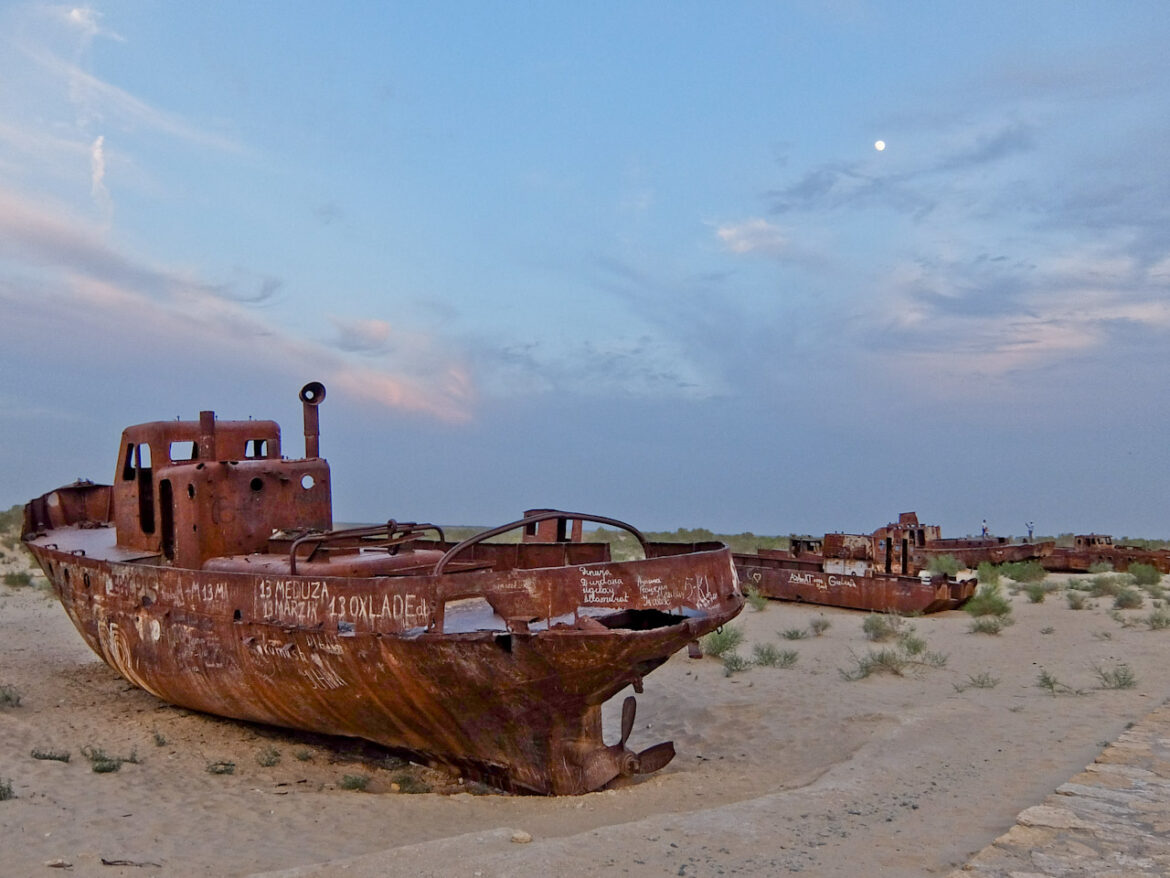
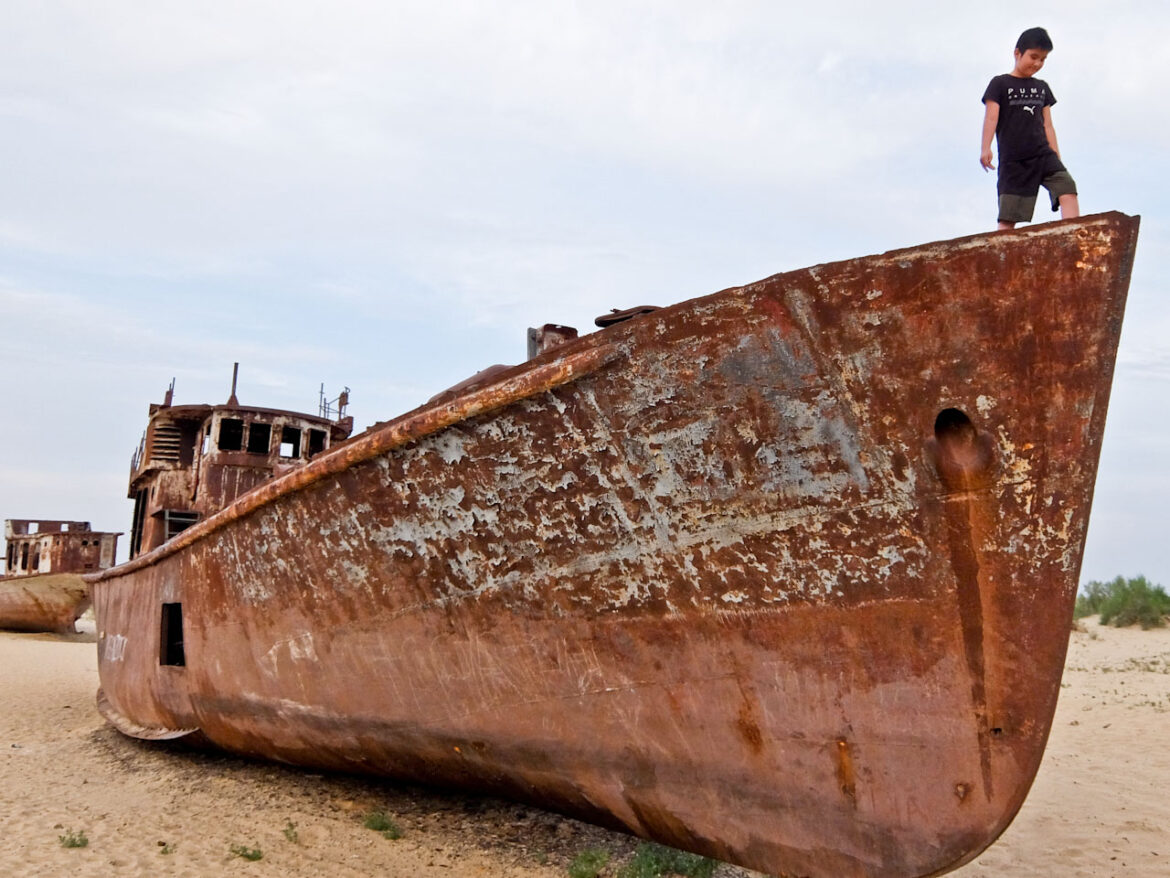
A lighthouse still stands on the cliffs above the harbour, but the ships on the dry seabed below stand as a memorial to bygone times. Thirteen rusting hulls now lie eerily abandoned in the sand, arranged in a coffin-like line. I walk around them at sunset as local kids play hide and seek inside the corroded shells.
Nearby is the Aral Sea Museum, a solemn testament to the tragedy that unfolded in recent history. Photographs and paintings detail the region’s environmental decline and its profound impact on the lives of the locals. There are models of the boats they sailed and even their fish, encased in Soviet era cans.
Aral Sea
Leaving Muynak I say goodbye to civilization and set out in a 4×4 across the vast scrublands that make up what was once the seabed. There are no roads here, just faint dirt tracks, no settlements and nothing to see apart from the occasional drilling tower – the seabed is a rich source of natural gas. It’s a monotonous journey of around five hours.
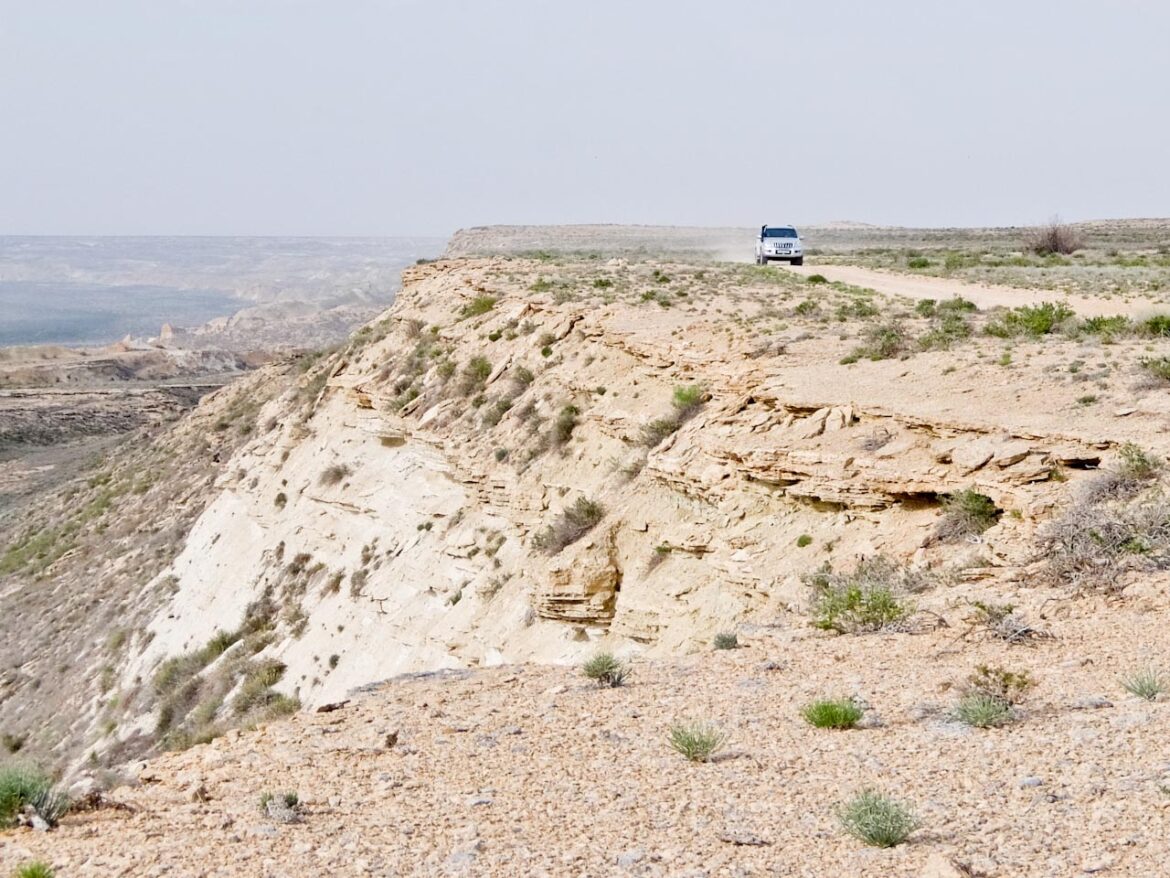
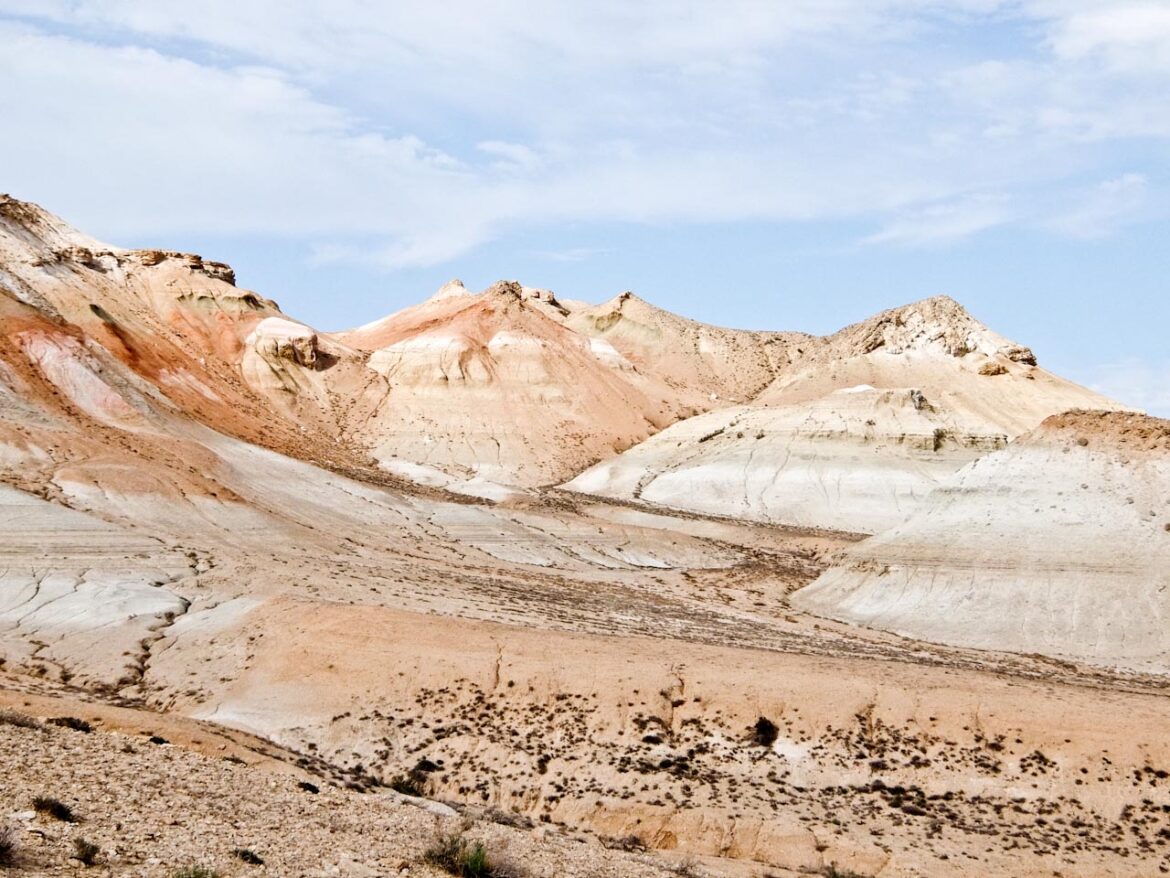
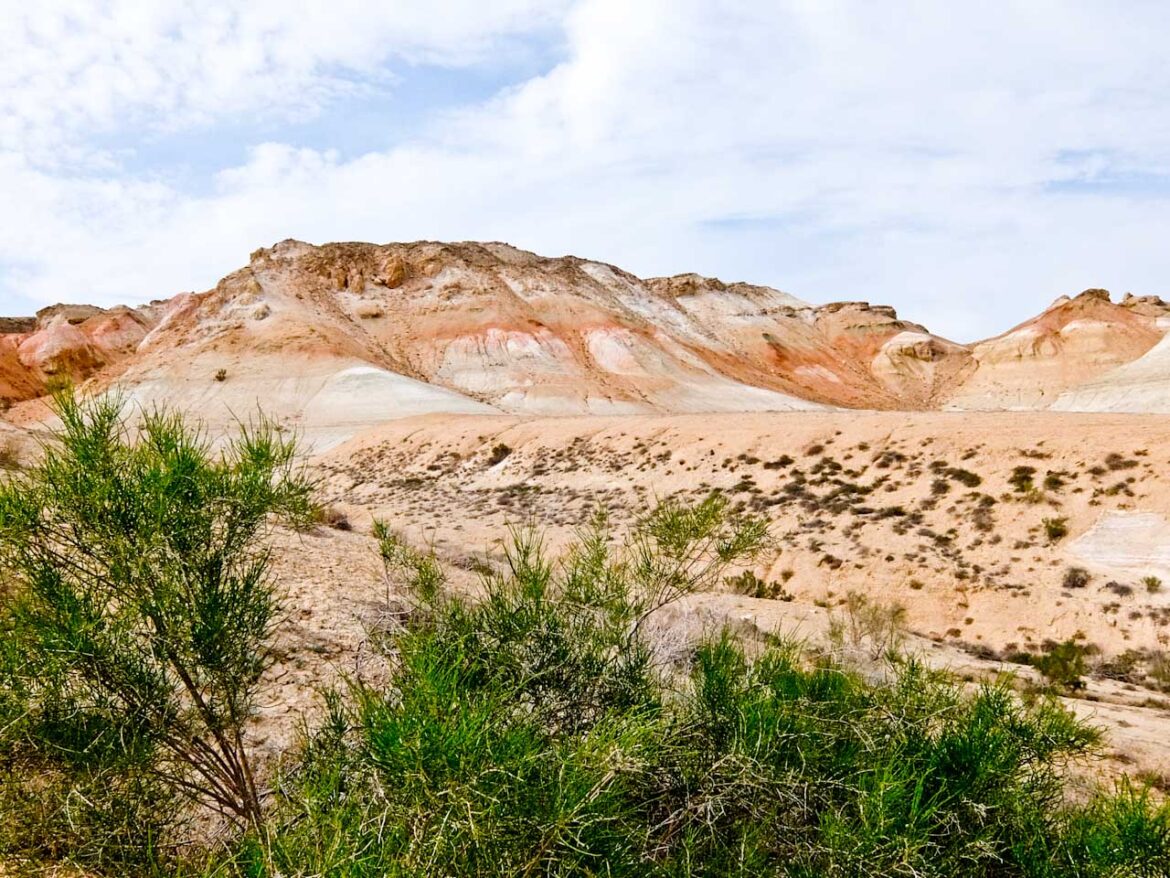
Finally on the horizon, the landscape seems to change. As I get closer, I can see it’s a barrier of steep cliffs, probably once the shore line. We climb up to the plateau and follow the clifftop. Just beyond a ramshackle worker’s caravan, suddenly the view opens up and there it is, the Aral Sea spread out in front of me. To the left and right are stunning rock formations, cathedrals of stone, known as the Aral Canyons.
A rough track leads steeply down to the shore and BesQala Yurt Camp where we’ll spend the night. Even in a 4×4 it’s a perilous descent and probably impossible in wet weather. We park as close to the water as possible, baked quicksands making the foreshore treacherous. Another yurt camp is being constructed here and the workers stop to watch.
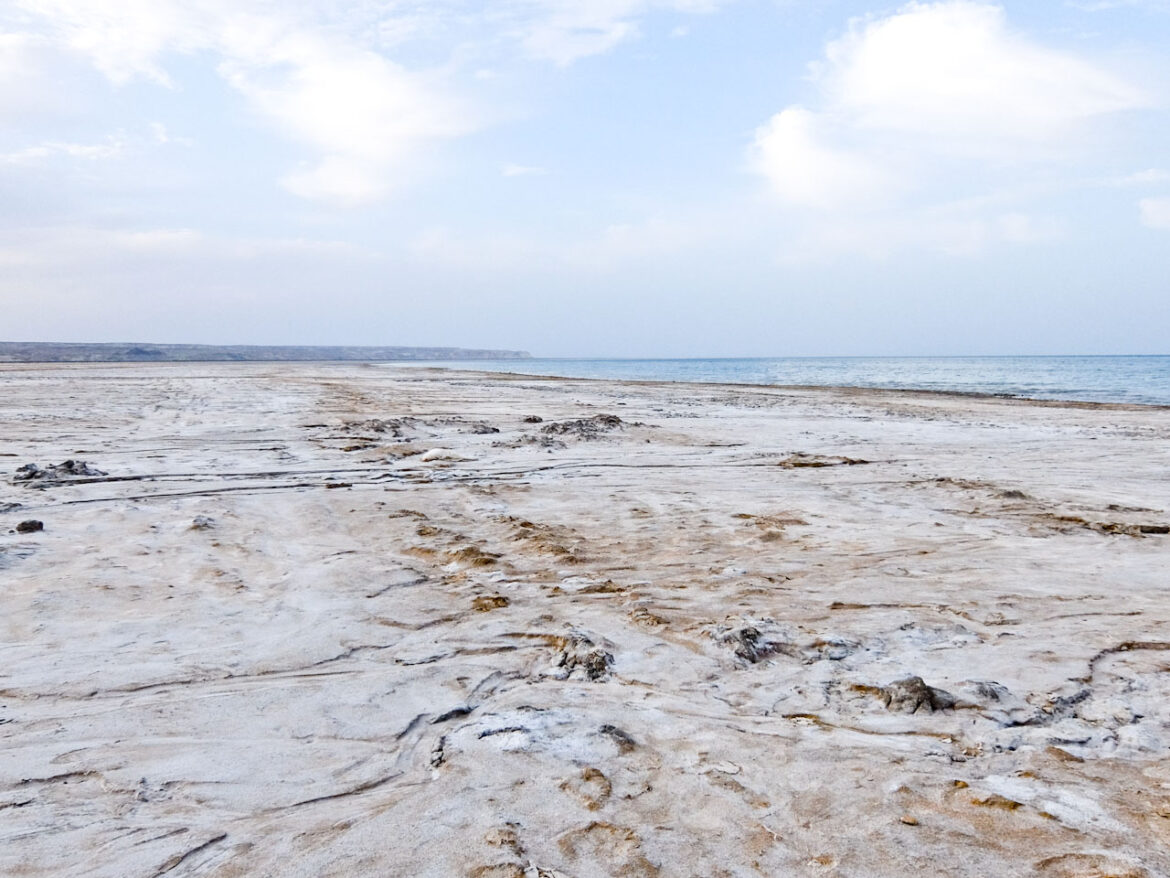
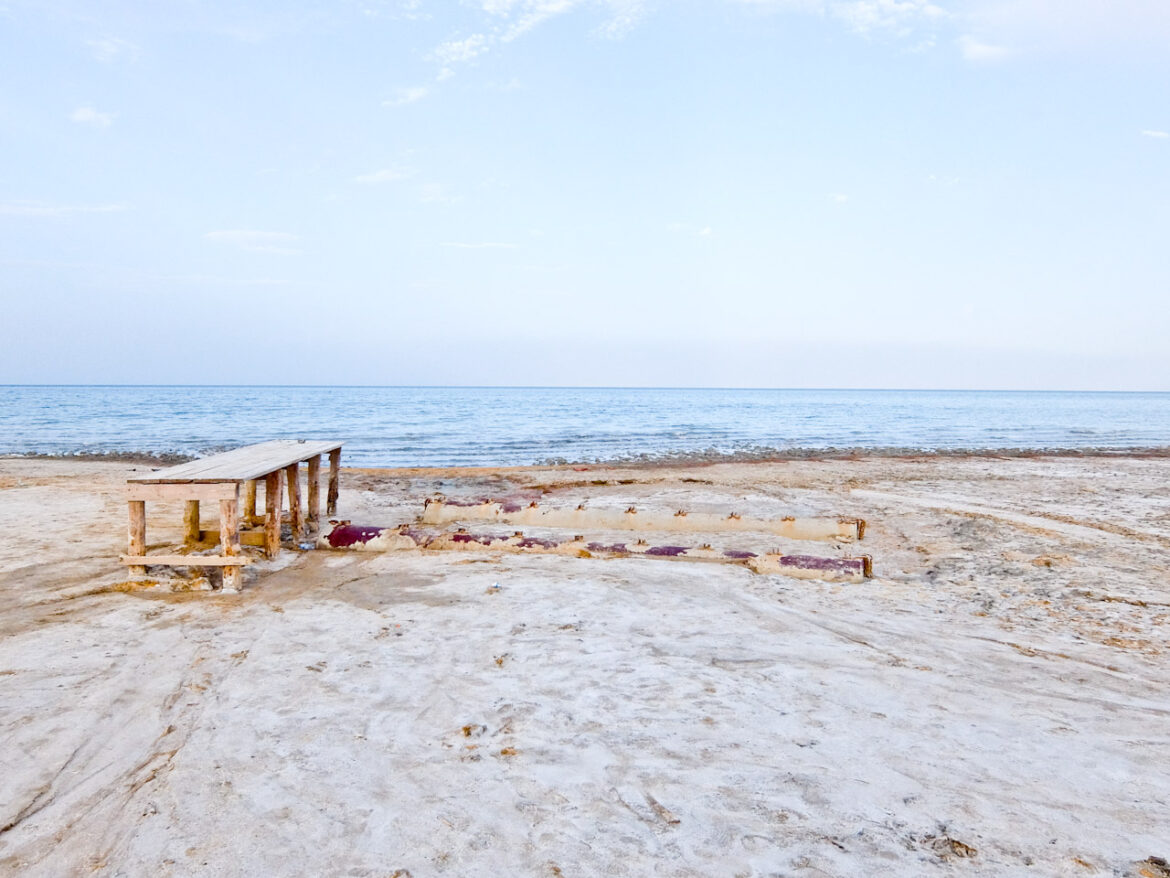
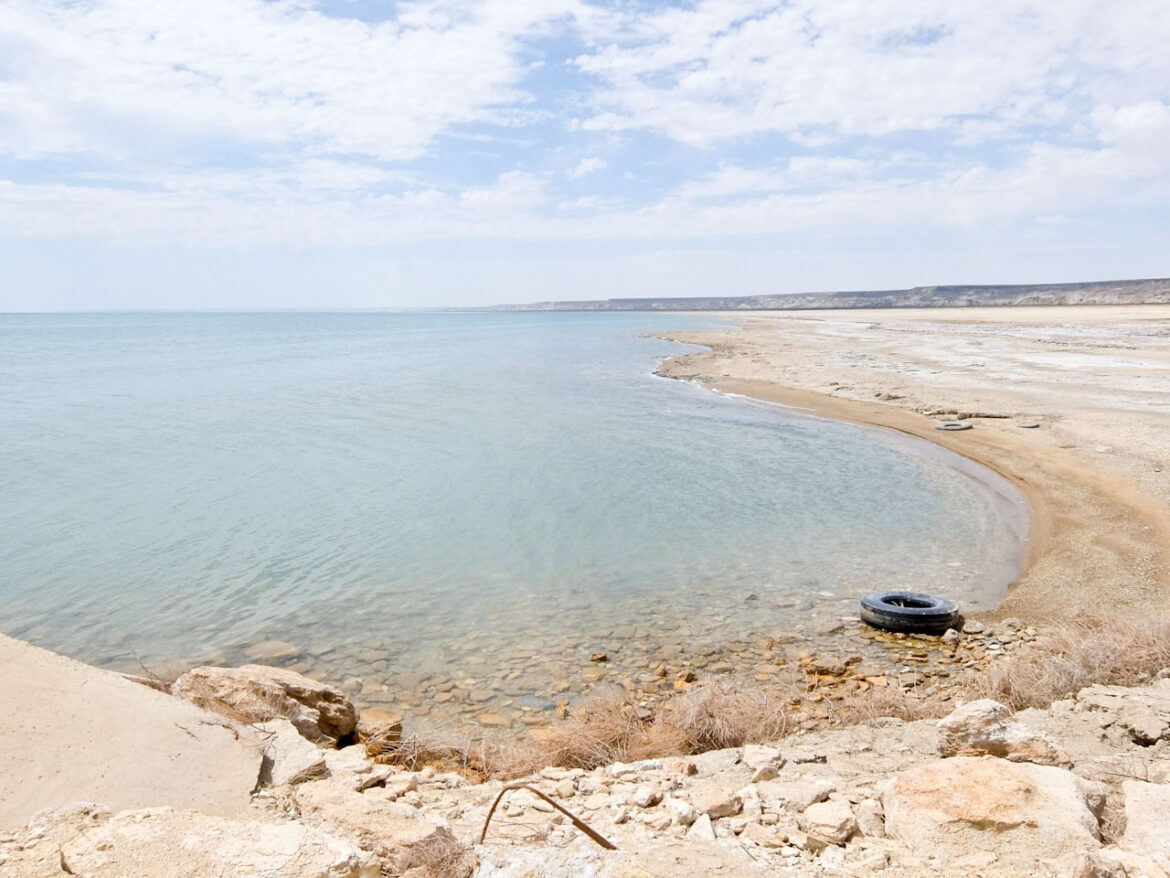
I change into my swimming costume and make my way gingerly to the water’s edge, careful not to slip. As I step into the murky water, I’m suddenly knee-deep in slimy black mud. Fortunately, it’s also very shallow so I sink on my hands and knees and propel myself forward through the murk. The water’s so salty that it provides extra buoyancy and, 100m from the shore, I finally get to float.
It’s not a particular pleasant experience so I don’t linger, mission accomplished. If you also want to swim in the Aral Sea you’d better get here fast. Soon it will be gone forever.
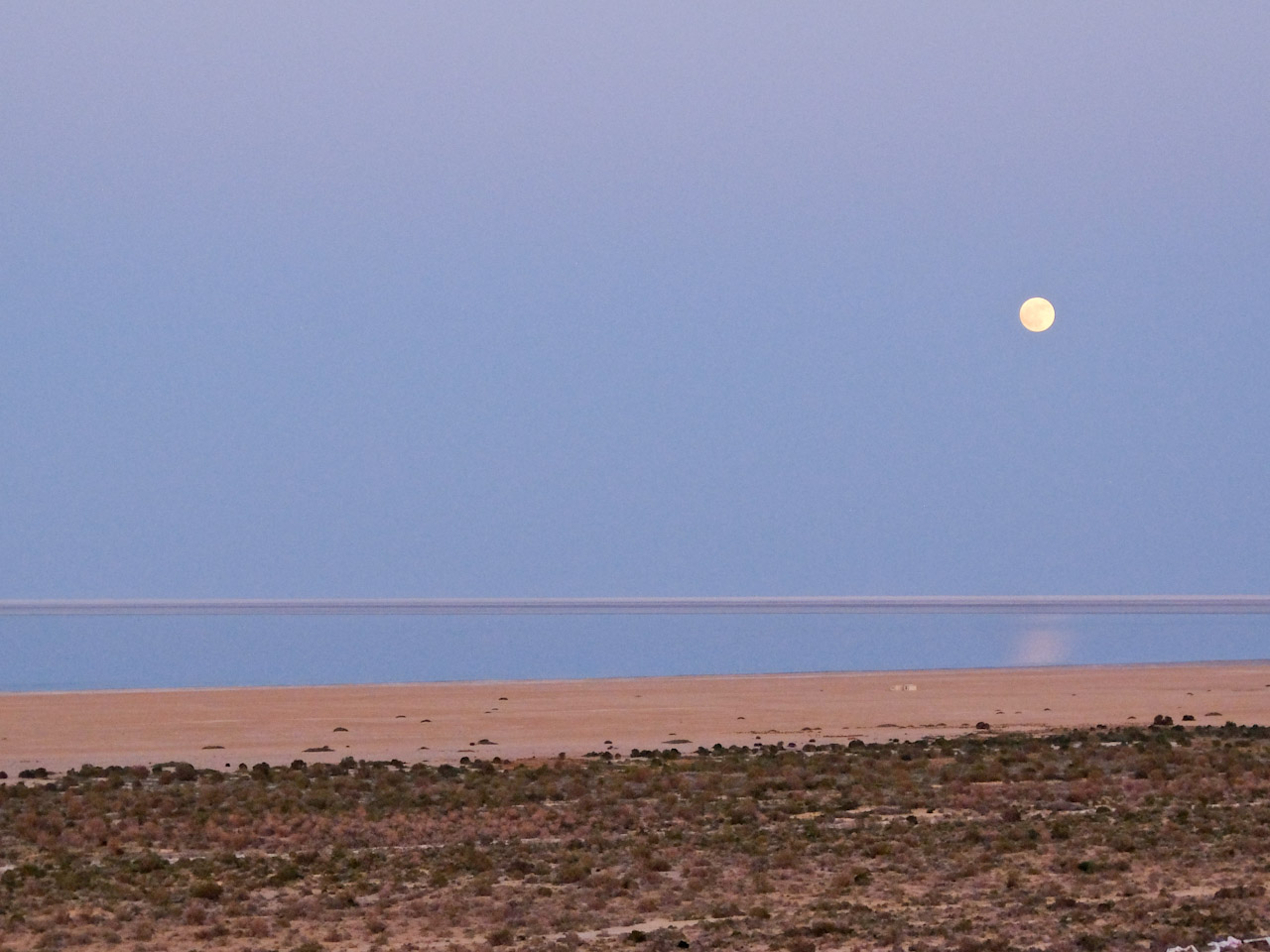
Fact file
GO: Turkish Airlines flies to Nukus via Istanbul.
Peopletravel offers multiple itineraries in Karakalpakstan, including the 12-day Eco Tour in Uzbekistan (from £735pp) and two-day Aral Sea Tour (from £160pp).
INFO: Uzbekistan Travel has information about the country.
Bradt’s Karakalpakstan by Sophie Ibbotson and Stephanie Adams is an indispensable guide to the region.

